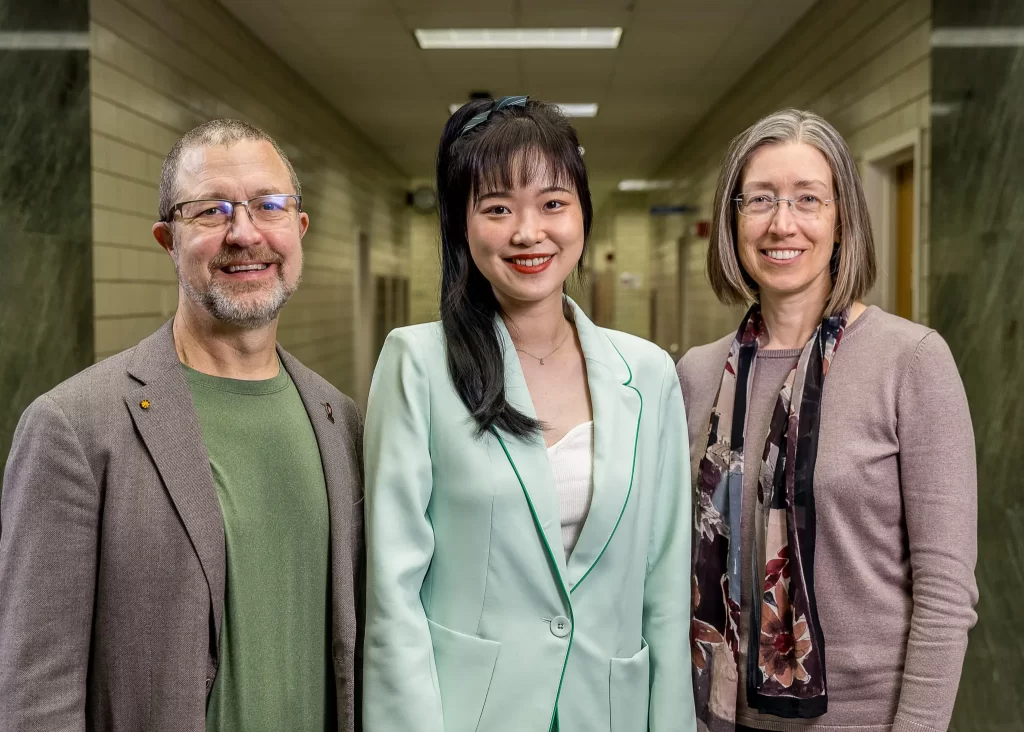30 Apr An electrifying discovery may help doctors deliver more effective gene therapies

Professor Emeritus John Booske, PhD student Yizhou Yao and Professor Susan Hagness. Credit: Joel Halberg.
In an effort to improve delivery of costly medical treatments, a team of researchers in electrical engineering at the University of Wisconsin-Madison has developed a stimulating method for making the human body more receptive to certain gene therapies.
The researchers exposed liver cells to short electric pulses—and those gentle zaps caused the liver cells to take in more than 40 times the amount of gene therapy material compared to cells that were not exposed to pulsed electric fields. The method could help reduce the dosage needed for these groundbreaking treatments, making them much safer and more affordable. The research appears in the April 30, 2024, issue of the journal PLOS One.
Gene therapy is one of the most promising technologies in medicine: By replacing, altering or introducing new genetic material into a patient’s cells, doctors may be able to cure or compensate for genetic diseases, including cystic fibrosis, sickle-cell disease, hemophilia, diabetes and many others. One of the bottlenecks in gene therapy, however, is delivery, or getting the right dose of genetic material into the target cells. The UW-Madison research suggests applying a moderate electric field which leaves no lasting damage, could help in creating more effective therapies.



